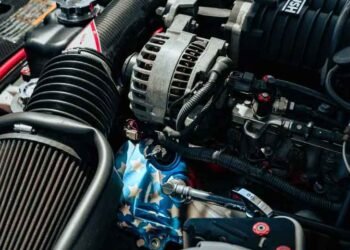The auto-industry is accelerating at a rapid rate, with new advances in safety, emissions reduction, and self-driving capabilities every day. Electric, hybrid, and driverless vehicles are seeing greater adoption, particularly by rideshare services. In cities like Phoenix, San Francisco, and Los Angeles, riders can use an app to hail a driverless car. Even despite some incidents and reports of safety concerns, these technologies are seeing rapid adoption and development.
Meanwhile, the race for technological advancement in auto manufacturing is shifting to different regions of the world. Unexpected players like Finland, France, and the U.K. are amping up their work on developing safer, longer-lasting batteries. The most exciting players in the race, however, are the APAC countries — China in particular. Here are some of the ways that auto technology is changing, and which trends and regions to keep an eye on in the coming year.
1.Artificial Intelligence
Self-driving technology is the most commonly understood example of AI-use in the auto industry. However, there are many other roles AI plays in automobile design, manufacturing, sales, and more. For example, some auto makers are exploring the use of AI-powered robots, alongside human workers, on the manufacturing floor. These humanoid robots can assemble car parts with their limbs, but can lift heavier objects and stand in awkward positions without tiring.
AI is also being deployed on the sales side of the industry, making the process of viewing, choosing, and purchasing a car more efficient. For example, some dealerships are using AI-powered automotive sales software to instantly answer client questions, schedule appointments, and follow-up with prospects. Instead of waiting for an overworked salesperson to return each call, customers get personalized, instant assistance from highly intelligent AI agents.
2.Advanced Self-Driving Tech
In 2025, auto manufacturers are using AI to improve road safety, teaching self-driving cars to make better decisions and remove human error from the driving process. However, they still have a long way to go in learning to navigate the many potential scenarios they can encounter on the road. Some models are adding more cameras and multiple different sensor types to feed their algorithms more data. Others are working on solving more and more complex traffic situations.
Self-driving cars still face one major problem in their development: ethics. Designers are trying to solve the problem of how to make the right decision in the case of an unavoidable accident. For example, when collision and injury is inevitable, should a self-driving AI car protect the riders inside, or pedestrians on the street? Should AI follow the written law, or the “rules of the road,” such as driving a few miles over the speed limit? Developers are still working on it.
3.Better Batteries
One of the reasons that electric cars have historically seen slow adoption is that they can’t go very long between charges. Some of the more popular vehicles can still only go about 200 miles before they need to be charged for 15 minutes. That would mean adding about an hour of charging time to the 12-ish hour drive from New York to Chicago.
In 2025, however, manufacturers are continuing to work on developing safer and longer-lasting batteries. In Finland, the government’s National Battery Strategy promotes investments in sustainable and innovative battery manufacturing. The Chinese government, meanwhile, is supporting six different companies in the development of solid-state batteries. These batteries are safer than traditional EV batteries, charge faster, and can store more energy for longer trips.
4.New Advances in China
Speaking of China, a key auto industry trend in 2025 will be the continuing race to keep up with the country’s massive technological progress. China is dominating global auto manufacturing, particularly in the realm of electric vehicle and battery technology. For example, one single China-based company, CTAL, manufactures close to 40% of the world’s EV batteries. China is also the world’s largest auto exporter, according to the World Economic Forum.
China has also found ways to make electric vehicle production so affordable that it can charge a whole lot less. Chinese budget EVs can cost as little as $10,000 USD, assuming you buy them in China. Even after tariffs and regulatory modifications, Chinese-made vehicles sold in the U.S. could still be significantly more affordable than current locally-manufactured offerings. The U.S. will have to make a lot of changes if it wants to keep up with this rapid pace of development.
A Long Road Ahead
As the auto industry speeds forward, it’s important for countries to keep their citizens’ other transportation needs in mind. In Europe and APAC countries, the development of high-speed rail and public transportation has kept pace with new car manufacturing. However, in the U.S., regional rail and inner city metro systems are falling into significant disrepair. A majority of U.S. citizens must rely on cars to get to work and school, buy groceries, and meet other needs.
As big tech players continue to advance technologies like AI, they should consider the needs of all individuals. Manufacturing more affordable EVs and hybrids is one piece of the puzzle, but investing in shared infrastructure is another. Hopefully, government decision-makers will take a cue from the auto industry and look to update and automate local and regional rail. Meanwhile, personal EV makers could work on self-driving buses and other AI-powered solutions.












